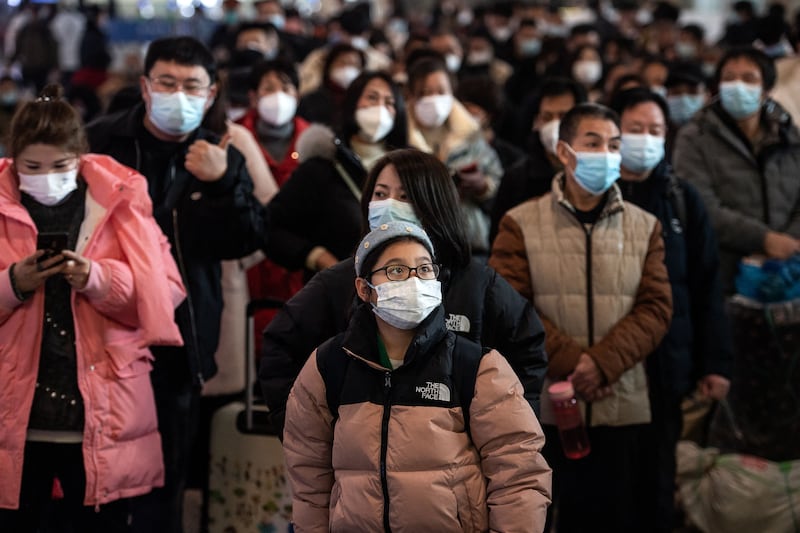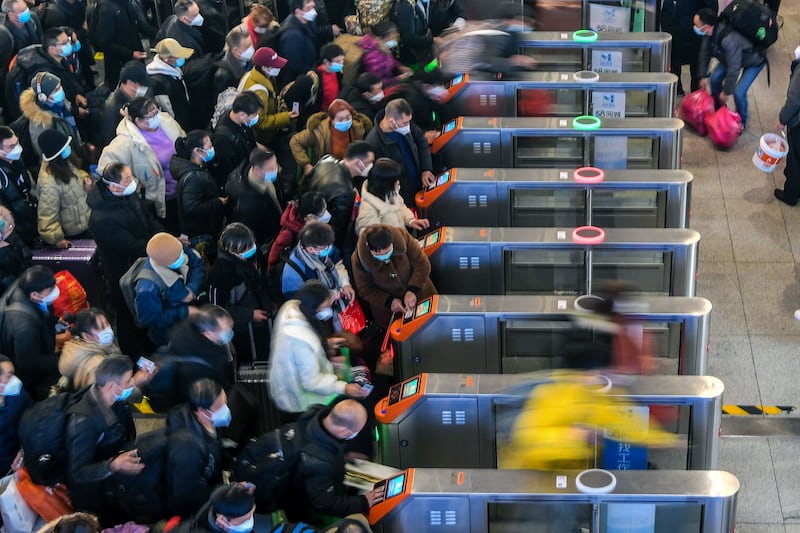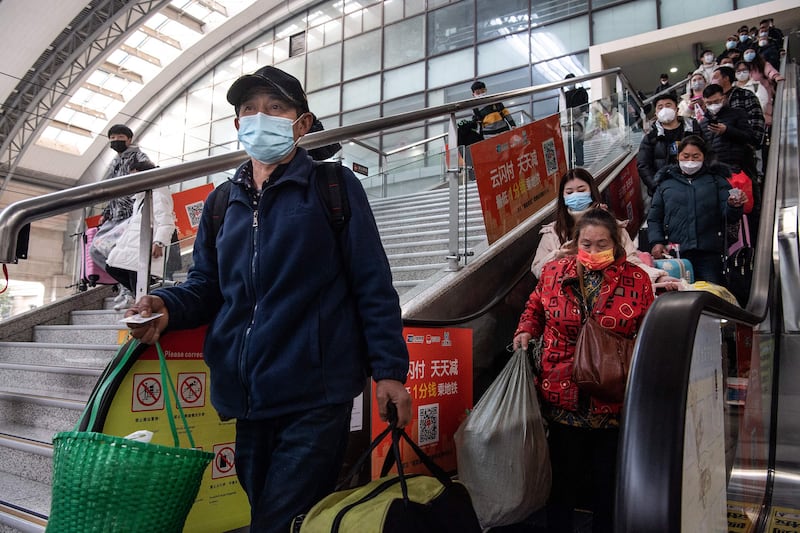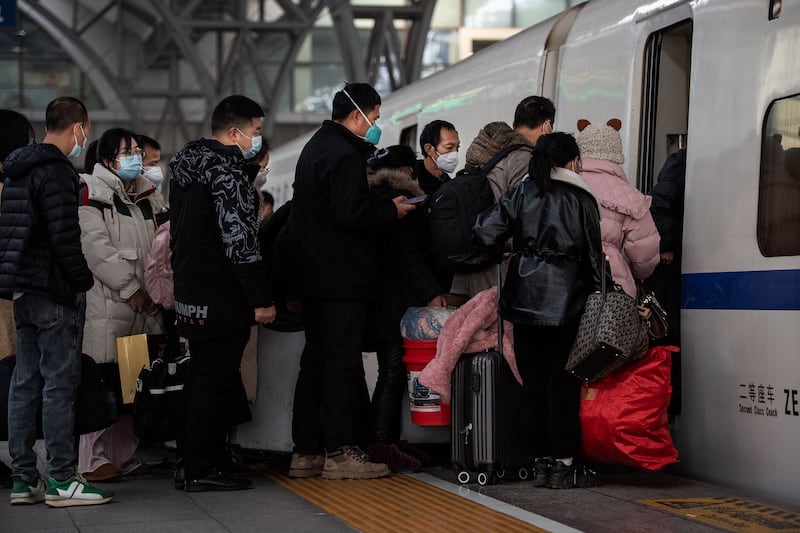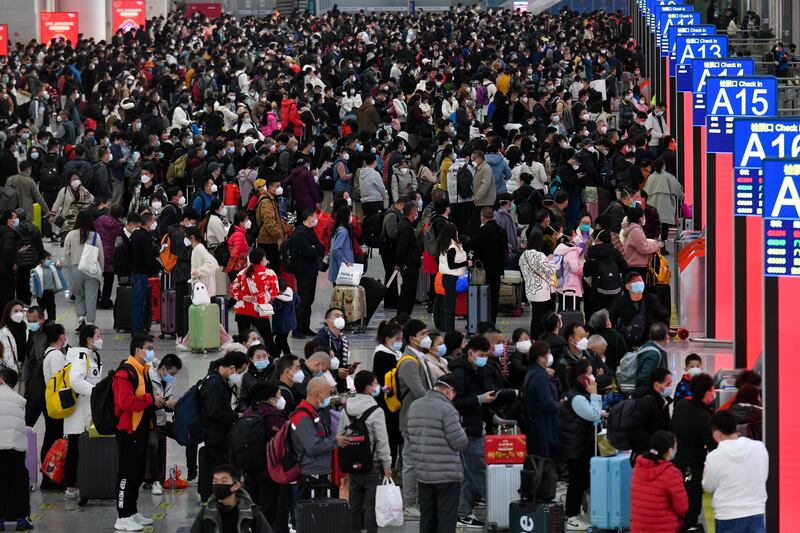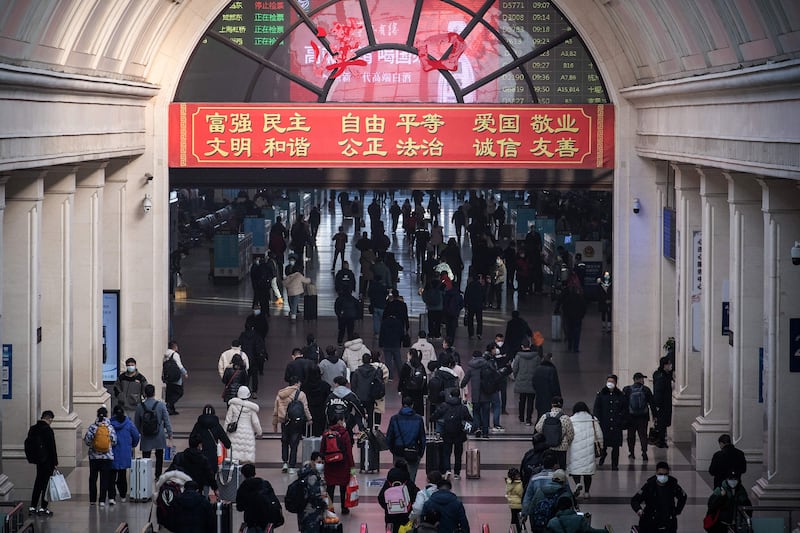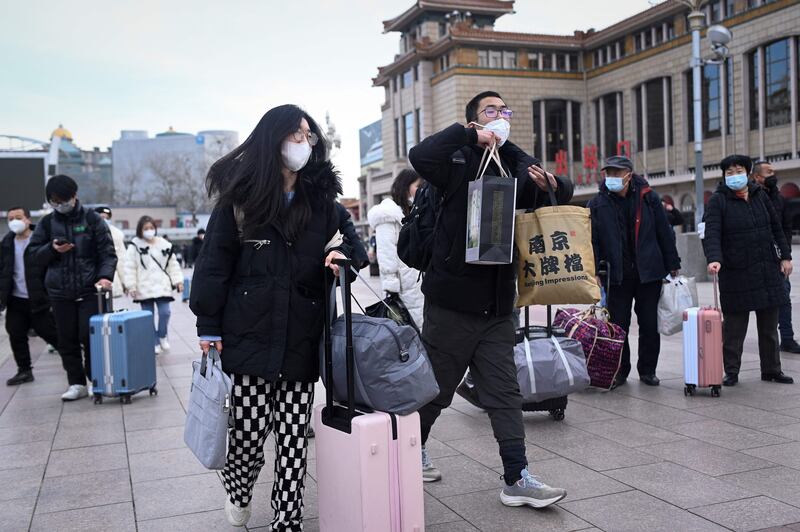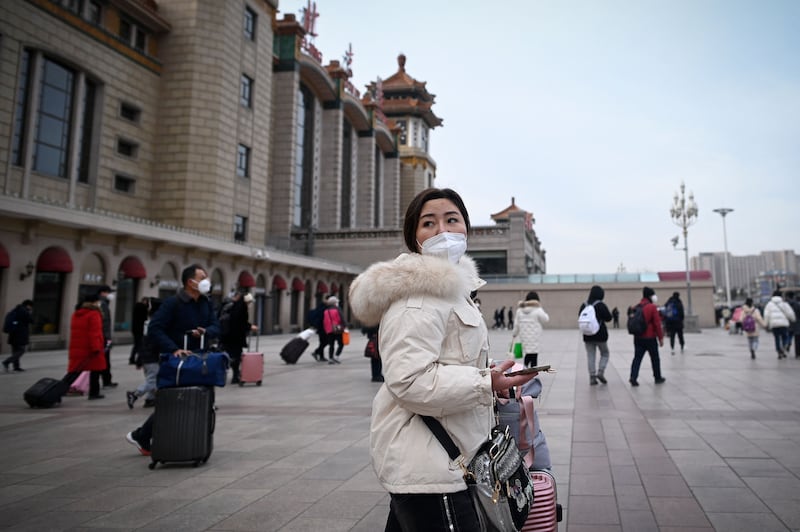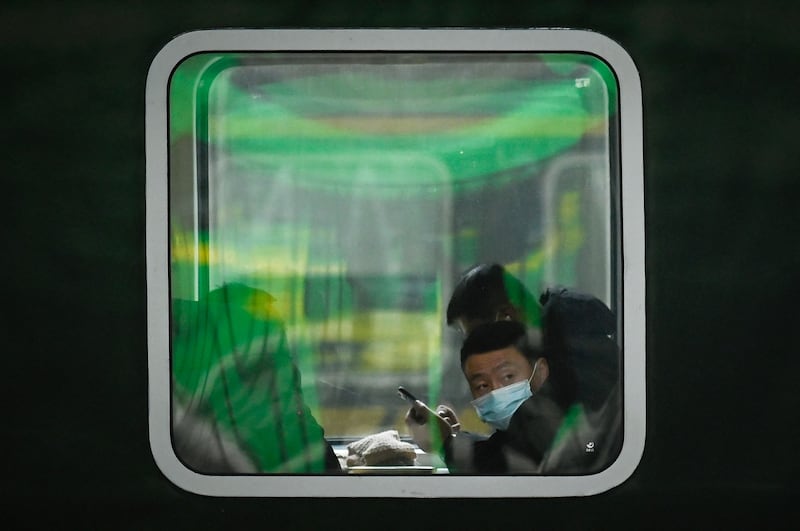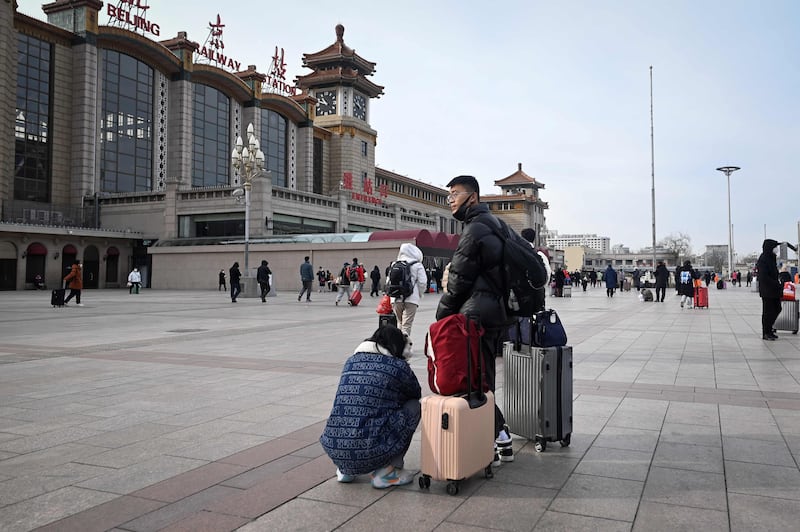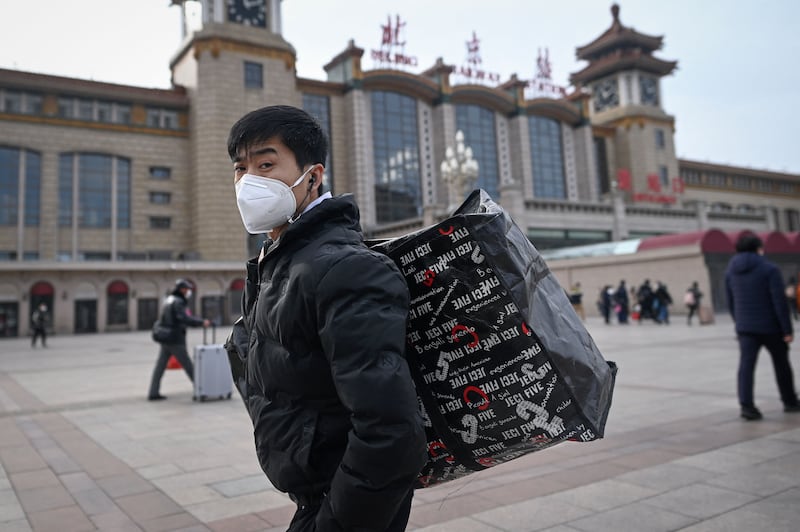China on Saturday marked the first day of chunyun, the 40-day period of Lunar New Year travel, and braced itself for an increase in the spread of coronavirus infections.
This Lunar New Year public holiday, which officially begins on January 21, will be the first since 2020 without coronavirus travel restrictions.
China has dismantled its zero-Covid policy over the past month following protests against frequent testing, restricted movement and mass lockdowns.
But the abrupt changes have exposed many of China's 1.4 billion people to the virus for the first time, starting a wave of infections that is overwhelming some hospitals, emptying pharmacy shelves and causing long lines at crematoriums.
China's Ministry of Transport said on Friday that it expects more than two billion passengers trips over the next 40 days, an increase of 99.5 per cent year-on-year and reaching 70.3 per cent of trip numbers 2019 — the year before the pandemic hit.
Reaction to the news online was mixed, with some comments praising the freedom to return to hometowns and celebrate the Lunar New Year with family for the first time in years.
Many others, however, said they would not travel this year, fearful of infecting elderly relatives.
“I dare not go back to my hometown, for fear of bringing the poison back,” said one user on Weibo, China's version of Twitter.
There are widespread concerns that the return home of migrant workers in cities will cause a surge in Covid-19 infections in smaller towns and rural areas that lack the capacity to deal with them, such as enough intensive care beds and ventilators.
On Sunday, China's border with Hong Kong will reopen and international travellers arriving in China will no longer have to quarantine.
However, the World Health Organisation has said China's official virus data underreports the true extent of its outbreak, and more than a dozen countries are now demanding pre-boarding Covid tests for travellers from China.
Chinese officials and state media have defended the handling of the outbreak, playing down the severity of the surge and denouncing foreign travel requirements for its residents.
On Saturday in Hong Kong, people who had made appointments had to queue for about 90 minutes at a centre for PCR tests needed for travel to countries, including mainland China.
For much of the pandemic, China poured resources into a vast PCR testing programme to track and trace Covid-19 cases, but the focus is now shifting to vaccines and treatment.
A circular published by four government ministries on Saturday signalled a reallocation of financial resources to treatment, outlining a plan for public finances to subsidise 60 per cent of treatment costs until March 31.
Meanwhile, sources told Reuters that Beijing is in talks with Pfizer to secure a licence that will allow domestic drugmakers to manufacture and distribute a generic version of the US company's Covid-19 antiviral drug Paxlovid in China.
Many Chinese have been attempting to buy the drug abroad and have it shipped to China.
On the vaccine front, China's CanSino Biologics announced that it has begun trial production of its Covid-19 mRNA booster vaccine, known as CS-2034.
China has relied on nine domestically developed Covid vaccines approved for use, including inactivated vaccines, but none have been adapted to target the highly-transmissible Omicron variant and its offshoots currently in circulation.
The overall vaccination rate in the country is above 90 per cent, but the rate for adults who have had booster shots drops to 57.9 per cent, and to 42.3 per cent for people aged 80 and older, according to government data released last month.
China reported three new Covid deaths on the mainland for Friday, bringing its official virus death toll to 5,267, one of the lowest in the world.
International health experts believe Beijing's narrow definition of Covid deaths does not reflect a true toll, and some predict more than a million fatalities this year.
With reporting from agencies
